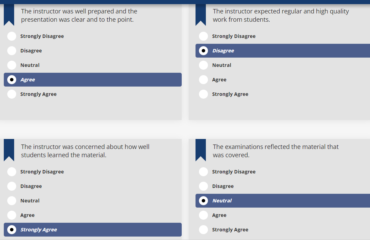
In our previous posts about improving course evaluation response rates, we discussed the importance of getting instructor buy-in and making the process easy for students. The last part of this series kind of goes hand-in-hand with the two previous posts: managing and automating emails sent to students and faculty.
When creating a course evaluation plan, institutions should consider the immediacy of the evaluation, incentives or rewards, the communication approach, and the format of the actual survey. Each of these factors has a significant impact on student response rates and can heavily influence the accuracy and usefulness of the evaluation.
SmartEvals’ Best Tips to Boost Response Rates:
Managing and automating emails: When asked about his experience with SmartEvals, Thomas Slomka, the Program Assessment and Reporting Specialist for the University at Buffalo, said, “Set it once and forget it.”
1. Mobile Ready
Make sure your email reminder system is mobile ready. According to a study by Fluent, as of 2015, over 72% of people aged 18-24 use their phones to check their email – a figure that has gone up even more in recent years. If you send emails compatible with mobile recipients, that’s half the battle.
2. Automation Schedule
Have an automation schedule set for reminder emails. Make sure you can select from different levels, whether it’s by department, division, or the school-wide level. Sometimes your survey system will already have this feature built in, so just ask your administrator of course evaluations.
3. Customize & Personalize
Customize and personalize reminder emails before you send them for automation. Following a template isn’t always enough – be mindful of key words and phrases that are effective and don’t be afraid to use emoticons or emojis into the subject line. Adding a personal endorsement from a student government president or captain of a sports team is also a great way to bridge the gap between students, especially if their message is that completing surveys helps improve classes.
4. Use What Works
Use what is working for others. In some cases, you and your faculty may have access to templates used by other departments with improved response rates. Depending on the system you’re using, you may have access to templates used by other schools. Try what others are doing successfully to see if it works for you.
5. Google Calendar
Add Google Calendar reminder links to your emails. If you use Google Mail or your system is able to interface with Google’s API, it’s a no-brainer. Pick a template, personalize it, and opt to add a Google Calendar reminder or event to the message. If a student clicks to add the reminder, their device can do the rest of the work for you.
6. The Magic #9
Nine is the magic number because it’s been tested as the optimal number of times to email students during an evaluation period. Of course, you only want to email those who haven’t completed their surveys, but we’ve found the best automation schedule is sending an email every four days and gradually working your way to two-day intervals as you near the end of the evaluation period. You can apply this scheduling technique to automated text reminders or voice call reminders as well.
7. Talk to a Specialist
It helps to know someone who focuses on boosting response rates for schools. Whether your institution is a community college or a four-year university, everyone has their own unique setup, so it’s important to contact someone who can adapt to fit your needs.









